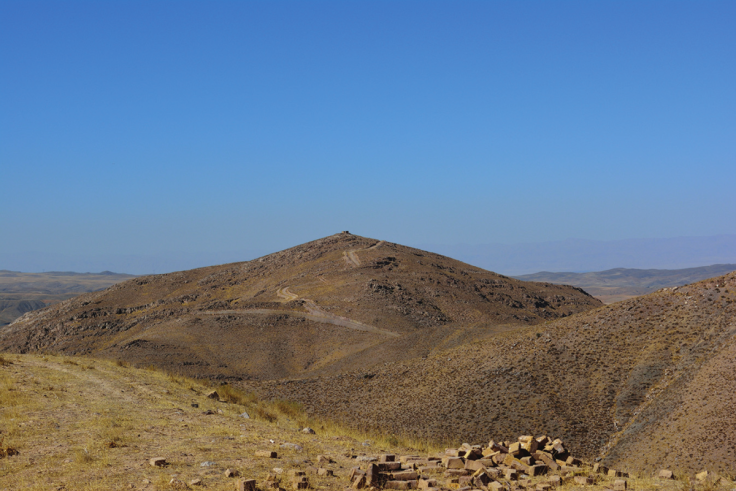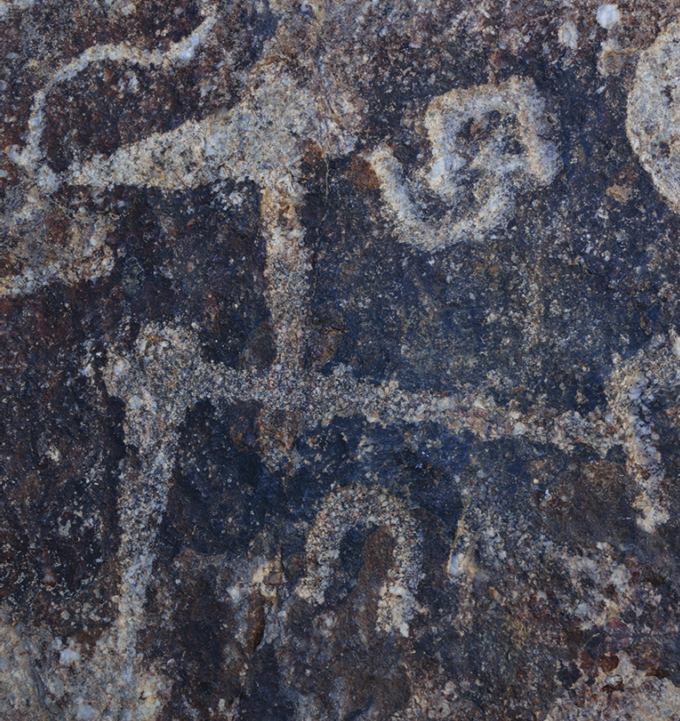Iran: Rock art from unknown ancient civilisation discovered on sacred volcanic stone at top of mountain
Archaeologists have not been able to date the mysterious engravings yet.
In Iran's remote north-east, the discovery of mysterious rock art is intriguing archaeologists. Strange symbols engraved on an outcrop of volcanic rock, on top of a mountain, appear particularly puzzling.
The site, known as Pire Mazar Balandar (or PMB001), is situated near a small village and is well known to the locals. They in fact consider the engraved stone to be sacred. It is covered in 16 simple symbols, including U-shapes which the villagers believe are the hoof prints of the horse of the prophet Imam Reza, who is buried at a nearby shrine.
Pilgrims had for years left offerings by the volcanic stone and had started to build a small temple around it. But it was only recently, in 2015, that archaeologist Mahmoud Toghrae discovered the site and began documenting the rock art.
The first results of these investigations are now published in the journal Antiquity.
Age mystery
In August 2016, Toghrae and two of this colleagues conducted fieldwork at the site, carefully describing the mysterious symbols marked in the stone. They also conducted a survey of the area and met with local people.
This led them to discover a second nearby site with volcanic rocks covered with engravings representing animals and humans.
"We found this second rock art group after a local pilgrim invited us to have lunch at his home. There, we discovered rock outcrops with several engravings showing specific subjects – anthropomorphic and zoomorphic figures. They are small in size, different from the ones documented on PMB001 but similar to other figures found in rock art all over Iran," co-author of the paper Dario Sigari, from the University of Ferrara in Italy told IBTimes UK.

At present, it is impossible to date the engravings or to associate them with any particular culture. This is a problem that archaeologists have always almost encountered when trying to date rock art in Iran. Because similar symbols and figures have been depicted repeatedly over the years, it is difficult to link them to a specific period – unless artefacts are found nearby, helping researchers come up with a more precise chronology.
Some of the symbols at PMB001 do give some clues. For instance, circular symbols on the stone are comparable to those found at another site and attributed to the Bronze Age. However, no precise dates can be put forward by the archaeologists without conducting more in-depth excavations in the area.
"There is a lot of debate when it comes to rock art in Iran to know whether we can attribute certain engravings to a period or another. We have a dating problem, because the same figures were represented, at different points in time from the Neolithic to the Iron Age. Probably the PMB001 area was settled at different periods, and the rock art represents all these phases. But without more excavations conducted at the site, we can't say for certain what the chronology of the two sites is," Sigari said.

The archaeologists also want to investigate what the location of the stones in the landscape can reveal about the significance of the rock art. The fact that PMB001 is located at the top of a mountain may prove important in interpreting the engravings.
It's possible that this position gave it a greater perceived sacred value, which was later adapted by modern population, in light of their new beliefs. "Such re-purposing of rock art for new beliefs and rituals will form another part of our ongoing research," the authors conclude.
© Copyright IBTimes 2024. All rights reserved.







